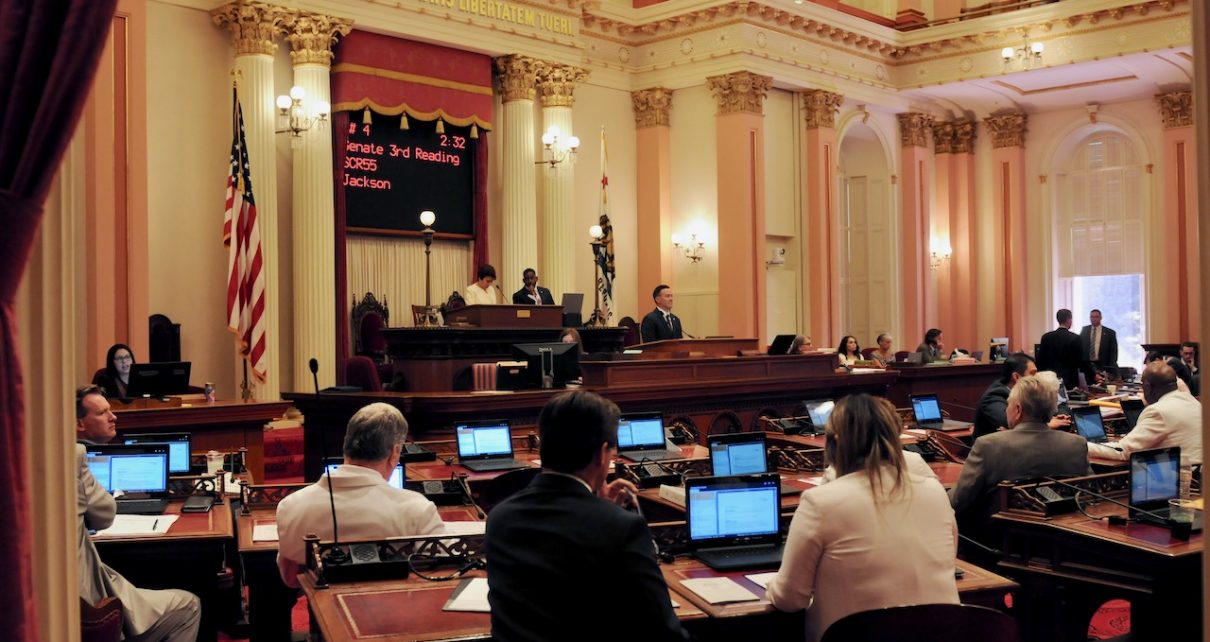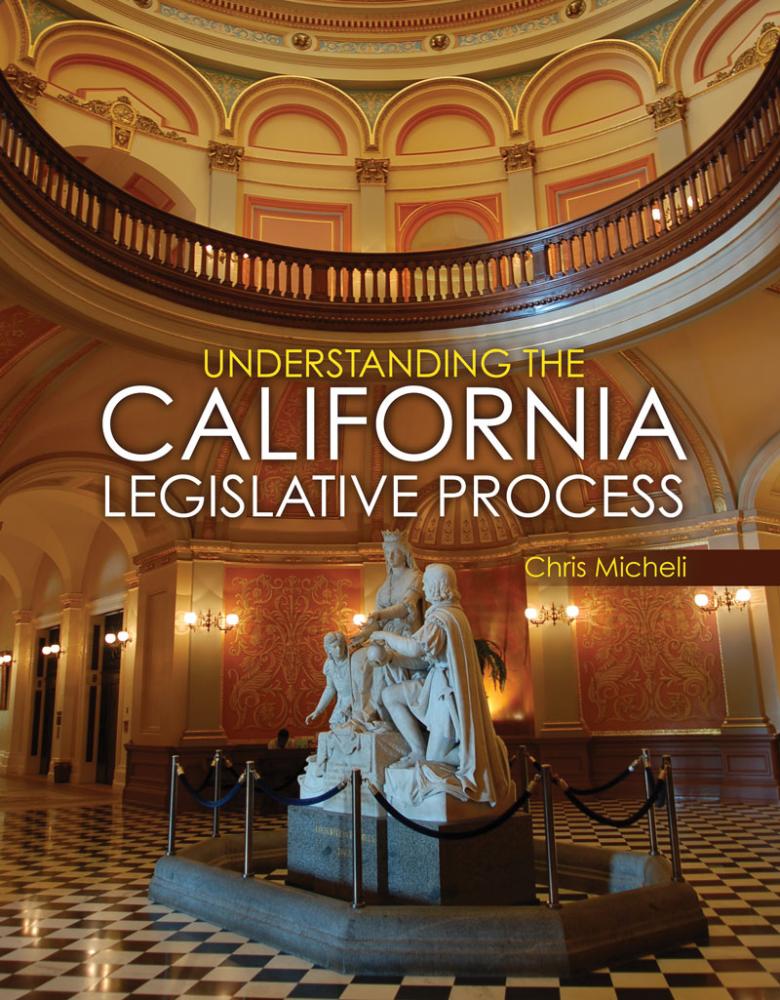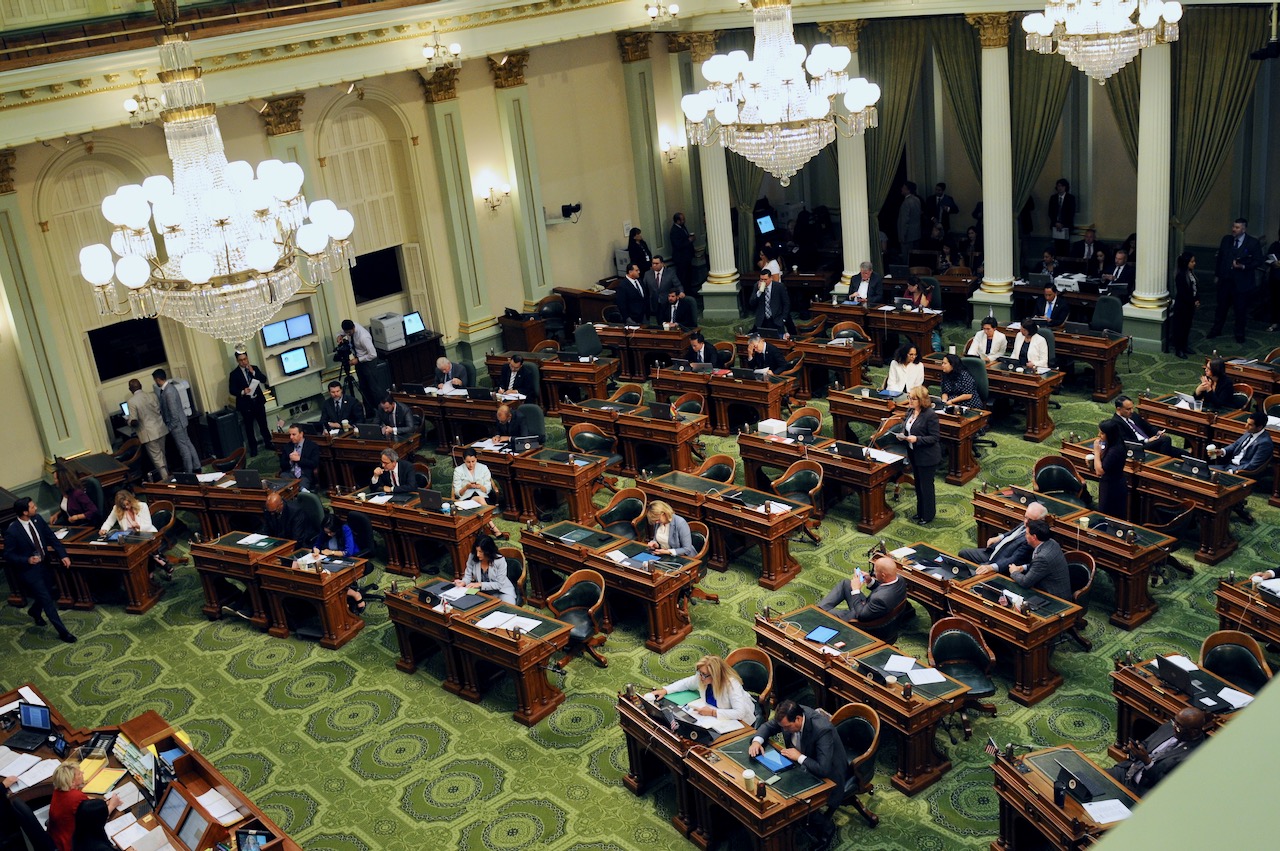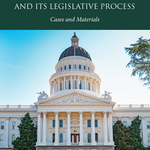
California State Senate. (Photo: Kevin Sanders for California Globe)
The ‘Sunrise’ Process in the California Legislature
This ‘sunrise process’ is patterned after similar regulatory practices in other states
By Chris Micheli, October 21, 2022 6:54 am
In California, as in a number of other states, there is the so-called “sunrise” process, which is the opposite of a “sunset” (or repeal) process, in the law. When establishing a new regulatory scheme for an occupation or profession, the Legislature will proceed with the sunrise process, which is when they assess a request for a new (or enhanced) occupational regulation.
In Government Code Title 2, Division 2, Part 1, Chapter 1.5, Article 8 (“Legislative Oversight of State Board Formation and Licensed Professional Practice”), Sections 9148 to 9148.8, there is a process for reviewing new licensure board and licensed professions in this state.
Section 9148 requires any state board or category of licensed professional proposed for creation by the Legislature to be subject to this article. Section 9148.2 defines the term “state board” to mean “any administrative or regulatory board, commission, committee, council, association, or authority consisting of more than one person, whose members are appointed by the Governor, the Legislature, or both.” It does not include any commission created by the Legislature under the Food and Agricultural Code.
Section 9148.4 requires a plan to be developed prior to consideration by the Legislature of legislation creating a new state board or legislation creating a new category of licensed professional. The plan is for the establishment and operation of the proposed state board or new category of licensed professional and is required to be developed by the author or sponsor of the legislation.
In addition, pursuant to Section 9148.4, requires the plan to include, but not be limited to, all of the following:
(a) A description of the problem that the creation of the specific state board or new category of licensed professional would address, including the specific evidence of need for the state to address the problem.
(b) The reasons why this proposed state board or new category of licensed professional was selected to address this problem, including the full range of alternatives considered and the reason why each of these alternatives was not selected. Alternatives that shall be considered include, but are not limited to, the following:
(1) No action taken to establish a state board or create a new category of licensed professional.
(2) The use of a current state board or agency or the existence of a current category of licensed professional to address the problem, including any necessary changes to the mandate or composition of the existing state board or agency or current category of licensed professional.
(3) The various levels of regulation or administration available to address the problem.
(4) Addressing the problem by federal or local agencies.
(c) The specific public benefit or harm that would result from the establishment of the proposed state board or new category of licensed professional, the specific manner in which the proposed state board or new category of licensed professional would achieve this benefit, and the specific standards of performance which shall be used in reviewing the subsequent operation of the board or category of licensed professional.
(d) The specific source or sources of revenue and funding to be utilized by the proposed state board or new category of licensed professional in achieving its mandate.
(e) The necessary data and other information required in this section shall be provided to the Legislature with the initial legislation and forwarded to the policy committees in which the bill will be heard.
Section 9148.8 allows the appropriate policy committee of the Legislature to evaluate a plan prepared pursuant to the above section, or the chair of the policy committee may instead require that the Joint Sunset Review Committee evaluate and provide recommendations on any plan prepared, or any other legislative issue or proposal to create a new state board.
In addition, the Joint Sunset Review Committee is required to provide to the respective policy and fiscal committees of the Legislature any evaluation and recommendations prepared pursuant to this section. If an appropriate policy committee does not evaluate a plan, then the Joint Sunset Review Committee must evaluate the plan and provide recommendations to the Legislature.
The policy committees of the Assembly and Senate require bill authors and sponsors to complete “a questionnaire and a set of evaluative scales to be completed by the group supporting regulation. The questionnaire is an objective tool for collecting and analyzing information needed to arrive at accurate, informed, and publicly supportable decisions regarding the merits of regulatory proposals.”
As the policy committees explain, “State legislators and administrative officials are expected to weigh arguments regarding the necessity of such regulation, determine the appropriate level of regulation (e.g., registration, certification or licensure), and select a set of standards (education, experience, examinations) that will assure competency.”
This “sunrise process” is patterned after similar regulatory practices in other states. In similar instances, the effort is to ascertain whether there exists an actual need for regulation of a profession or occupation. As part of the sunrise process, there are nine criteria used to determine whether a profession or occupation needs to be regulated. The nine criteria are the following:
1. Unregulated practice of the occupation in question will harm or endanger the public health, safety or welfare.
2. Existing protections available to the consumer are insufficient.
3. No alternatives to regulation will adequately protect the public.
4. Regulation will alleviate existing problems.
5. Practitioners operate independently, making decisions of consequence.
6. The functions and tasks of the occupation are clearly defined.
7. The occupation is clearly distinguishable from other occupations that are already regulated.
8. The occupation requires knowledge, skills and abilities that are both teachable and testable.
9. The economic impact of regulation is justified.
The Questionnaire, which is used as an aid to legislative and administrative staff, has the following three sections:
Section A helps identify the group seeking regulation and helps determine whether the applicant group adequately represents the occupation.
Section B will identify (1) consumers who typically seek practitioner services, and (2) non-applicant groups with an interest in the proposed regulation.
Section C has two parts: Part 1 allows presentation of data that support the application for regulation. Part 2 requires the applicant group to complete a self-rating on each of the Sunrise criteria.
Based upon the answers to these questions and others, there is a level of regulation that is specified and the resulting regulatory scheme will be developed by legislation.
- Effect of Emancipation - December 6, 2025
- Harbor Commissions in California - December 5, 2025
- Mediation Proceedings in Child Custody Cases - December 5, 2025




